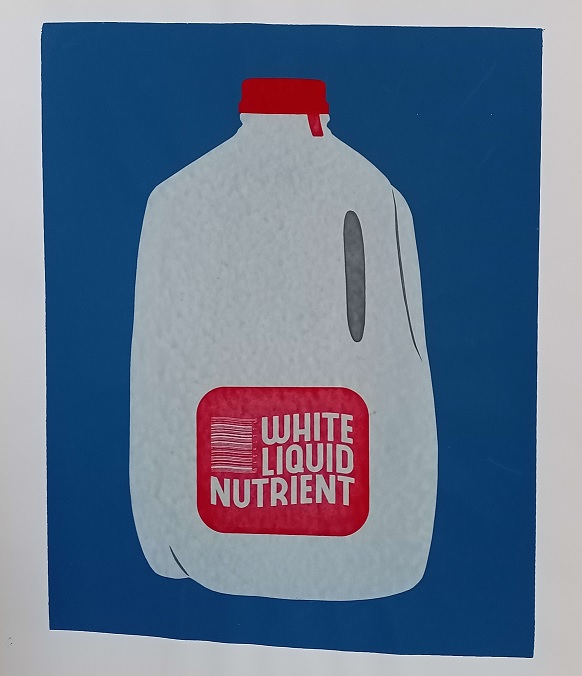Title. We keep ours at 75F, parents do 77F, and in laws 68F. It made me curious what everyone else keeps theirs at?
Living, itself, has become identified as an imperialist amerikkkan bourgeois decadence
Only have heating, no AC. So 19C over the day and 16 at night for the winter
I have an evaporative cooler it really doesn’t have temperature control. It is kind of whatever the outside temperature is -20f degrees with 75% humidity.
Off.
Type error: null is not a number.I don’t live somewhere that it gets to 0°C / 32°F, although it can get close in the middle of the night in winter, so I don’t need to worry about the cold killing me.
Electricity is expensive though. I just dress in layers and use blankets or a hot water bottle when it’s cold. When it’s hot I might turn on the aircon to get myself to “not miserable”, but that usually only happens a few weeks a year. I try to acclimate to whatever the outdoor temperature is.
I also keep my windows open all year. The idea of keeping an entire house (not my small city shoebox, that is at least insulated by other shoeboxes) at a constant temperature year-round is sort of weird to me. Most people I know will use the aircon or heater at home maybe half the time, they’re nowhere near as avoidant of using them as I am.
I just find it hard to justify the expense, both financially and environmentally, unless I’m truly miserable and not just slightly uncomfortable.
It’s been mid 70s here in the day and mid 50s at night just about all summer so far. Bought two window air conditioners but never bothered to install them. We open windows at night and close them in the day.
Kiwi here, we call them heat pumps over here. In fact it’s the first time I’m even hearing the term “reverse cycle air conditioner” lol.
WHAT THE HELL IS A FARENHEIT 🇪🇺🇪🇺🇪🇺🇪🇺🇪🇺🇪🇺🇪🇺
You guys can control the temperature in the summer?
Right? I’m over here looking at my thermostat set to Off.
Username checks out.
Tried to set ours here to around 20°C (~70°F), but it barely even reaches 23°C (~74°F) even in the middle of the night. I still consider myself lucky being able to run the AC for most of the day though, so I’m not complaining.
They never seem to be very accurate even if it thinks it’s reached 20c
Even more so since my AC’s thermostat is located just inside the air intake. Perhaps it registers a far lower temperature than the rest of the room. It’s easily compensated though by setting the thermostat lower than the target ambient temperature (here, it’s 25°C or 77°F), I guess.
In australia reverse cycle ac is very common, so we keep ours set to ~24°C year round.
Europe.
Winter 20C/70F, but we only heat the bedrooms or rooms we mostly stay in. Kitchen, etc. can go as low as 10C/50F
Summer: no heating/AC at all. Open a window when cold air is coming inside. Close the windows when hot air is coming in. It’s never gone above 35C/95F.
Sometimes when it’s too cold. You wear a sweater and thick socks.
Sometimes it’s hot. Fan or live with it. Adapt our schedules accordingly, perhaps do groceries when it’s super hot or go on an errand that requires the car a drive so we can cool down in the supermarket/AC.
It’s never gone above 35C/95F
I think I speak for 99% of the people here when I say “FUCK THAT”
That happens quite often for me inside, it really sucks. Not much I can do about it though.
I think I misunderstood him. I assumed he meant that the inside of his house was 95, but I think he meant that the outside was 95. Still anything over 80 indoors I can’t handle.
Edit: nope just read his other reply and it was 95 inside. Again, fuck that.
Yeah, it sucks. AC is very uncommon in residential housing so there is not much you can do, especially if you’re like me with a hot computer in the house. Without a computer it’s still way to hot but it’s better.
Optimally you open your windows but you might not always want to do that, since there are quite a few insects outside. During night the mosquitos are fucking everywhere, so leaving a window open is possible, but it’s risky.
would a remote screen and kb/mouse setup solve it?
The climate’s fucked and inflation is rampant.
You’re frankly better off getting used to the occasional hot day.
It’s hot, but you get used to it.
69° all year round. It’s nice.
Nice
Nice
I have been involved in many of these types of discussions, and I’m convinced that we are not experiencing the same temperatures when we set our thermostats to the same temperature. If I set mine any lower than 77°F, I would freeze to death. But many people here set theirs to below 70°F.
I have a few hypotheses.
-
Apparently AC units can really only make the temperature about 20-25°F degrees colder than the outside ambient temperature. It is over 100°F in my area almost every day from June to mid September, so any temperature below about 78°F just means your AC is on 100% of the time. This is removing moisture from the air, making it feel colder.
-
My thermostat is right next to my garage door, which is not insulated. This is probably where the majority of heat enters the house. So the thermostat thinks it is warmer than it is. Other people might be in similar or opposite situations and need to set their thermostats to account for that.
-
People’s AC units are not actually cooling anywhere near those temperatures. The unit is just one 100% of the time at those temperatures, and they could realistically increase the temperature a great deal and get the same results.
-
Humidity.
-
Some people’s AC units/thermometers just suck. 65°F on their unit actually gets the space to the same temperature as 75°F on my unit.
Number 2 has merit. Here are a few more.
-
Most thermostats do require calibration, and nobody has time for that. This has a similar effect to your second point. Proper air flow (or lack thereof) throughout the home is also important.
-
Sunlight makes a huge difference. A temperature that feels comfortable at night may not feel comfortable at noon in a home with a lot of natural light. Same as a sunny vs a cloudy day, indoors or outdoors.
-
Men and women have drastically different tolerances for comfortable room temperature. In general, non-menopausal women tend to appreciate a slightly warmer room than men. This plays out in office spaces all over the world, with many women running space heaters under their desks.
-
Clothing obviously makes a huge difference. Some people prefer to dress for their desired temperature; others prefer to dress for their physical comfort and let the HVAC balance things out accordingly.
-
Medical conditions and medications and diet can all drastically affect one’s body heat output. For example, anything that boosts serotonin is likely to make one run hot. Stimulants will constrict blood vessels and make one cold, especially in the extremities. And we all know what alcohol does (dilates blood vessels, allowing more heat to escape the body, lowering one’s body temperature despite actually making them feel warmer). Blood sugar levels make a difference. The list is endless.
But it’s interesting that most of your thought process went into how HVAC systems and humidity work, versus the simple fact that the people themselves are just drastically different (see points 3 through 5).
-
This is removing moisture from the air, making it feel colder.
That’s not how humidity works. Higher humidity means that cooler temperatures feel much colder and warmer temperatures feel much warmer. Even the heat index calculation shows this. Just try it out for yourself, or look at the formula. https://www.weather.gov/epz/wxcalc_heatindex
People’s AC units are not actually cooling anywhere near those temperatures. The unit is just on 100% of the time at those temperatures, and they could realistically increase the temperature a great deal and get the same results.
I don’t know why you think this. Maybe you only have a single stage AC or maybe you’ve never actually measured the temp with an extra thermometer, but you can get the ac 40-50°F cooler than outside, both by removing humidity (which decreases the “feels like” temp) but also through actually heat removal from the house. You might just have bad insulation as well.
If you live in a dry climate you can do the opposite. Pump humidity in using a swamp cooler, which places moisture in the air and then immediately causes it to evaporate carrying heat with it in the state change. You’re cooling the air slightly and since moisture exaggerates temperature changes it feels cooler to you.
My thermostat is right next to my garage door, which is not insulated. This is probably where the majority of heat enters the house. So the thermostat thinks it is warmer than it is.
I’ve got an Ecobee thermostat and they sell little temperature sensors that you can place anywhere in your house. You can configure which sensors are used at which time - for example I have a sensor in my bedroom, and configured it to only look at the bedroom temperature overnight. If you select multiple sensors, it averages them.
It’s a decent solution to this problem.
-
24°C in the summer
20°C in the winter
Same! But I try to not starting to use the AC until the season has really taken off :P
19°C / 20°C in winter no AC in summer
My heating is set at 21°C (70F) for daytimes and 16°C (61F) for the night time, so it doesn’t come on at all during summer, and a lot of spring (UK). During winter when it gets colder out (like below about 6°C/43F) I will usually need to whack it up by a couple of degrees, or give it a little extra blast in the morning to warm up. Its an old building (late 1800s) and my flat has external walls on three sides, and a cold empty basement below, so it can get quite cold when the outside temperature drops.
Edited to make it clear i mean my heating thermostat, because I realised most people here are talking about AC and that’s very rare in homes here.
This is a trap to identify the Fahrenheit users for future re-education, isn’t it?
Not American. What’s a thermostat?
Only God knows
The electronic thing on the wall that controls the temperature of your heater or air conditioner.
older ones are often electrical, but not really electronic. they use a bimetal strip that bends due to changing temperatures, to complete a circuit at the point you set the slider. it’s actually a really fascinatingly simple bit of tech.
Mine growing up used a bit of mercury in a sealed vial mounted to that bimetallic strip.
Thermostat isn’t an American term.















